Air Travel and Airlines
The American Airlines Recipe Book
We recently posted about the American Airlines Wine Club, which allows people to enjoy wines served inflight at home. Turns out that in 1994 the company did something similar with its airline food, publishing a recipe book so that people could "prepare their inflight favorites at home". It was titled A Taste of Something Special.The book was given to frequent fliers, rather than being sold to the public. But you can now download a pdf of the entire thing via Michigan State University Library.



Yonkers Herald Statesman - Feb 8, 1996
Posted By: Alex - Wed Apr 14, 2021 -
Comments (8)
Category: Food, Cookbooks, Air Travel and Airlines, 1990s
American Airlines Wine Club
Fans of mile-high drinking can now get a taste of the same experience at home thanks to the new American Airlines Wine Club. For $99 a month, members get three bottles of some of the wines served inflight shipped to them each month.I'm sure it's good wine. For $33 a bottle, it better be. But it seems to me like a weird extension of the American Airlines' brand. Although as an economy flyer I associate air travel with misery and discomfort. Perhaps if I flew first-class I'd feel differently.

via Retail Therapy
Posted By: Alex - Thu Jan 28, 2021 -
Comments (5)
Category: Clubs, Fraternities and Other Self-selecting Organizations, Inebriation and Intoxicants, Air Travel and Airlines, Alcohol
Grover Loening’s Flying Airstrip
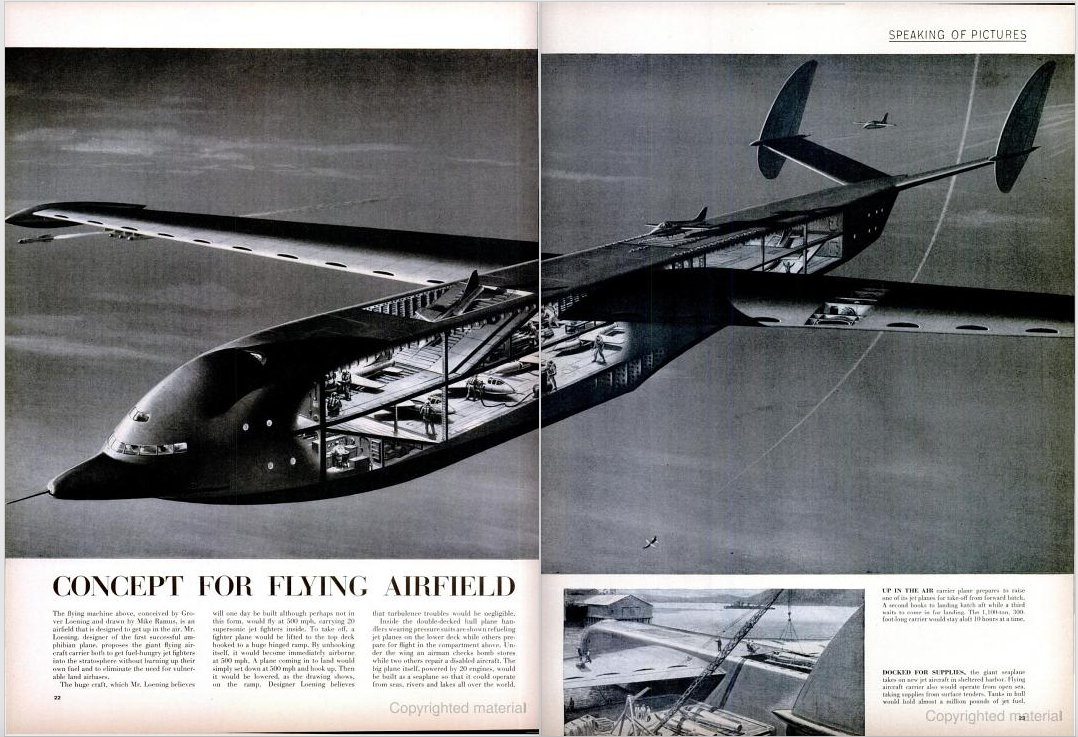
Source.
The inventor's Wikipedia page.
Posted By: Paul - Mon Dec 14, 2020 -
Comments (1)
Category: Excess, Overkill, Hyperbole and Too Much Is Not Enough, War, Weapons, Air Travel and Airlines, 1950s
Mystery Gadget 88
What's going on with these airplanes?The answer is here.
Or after the jump.
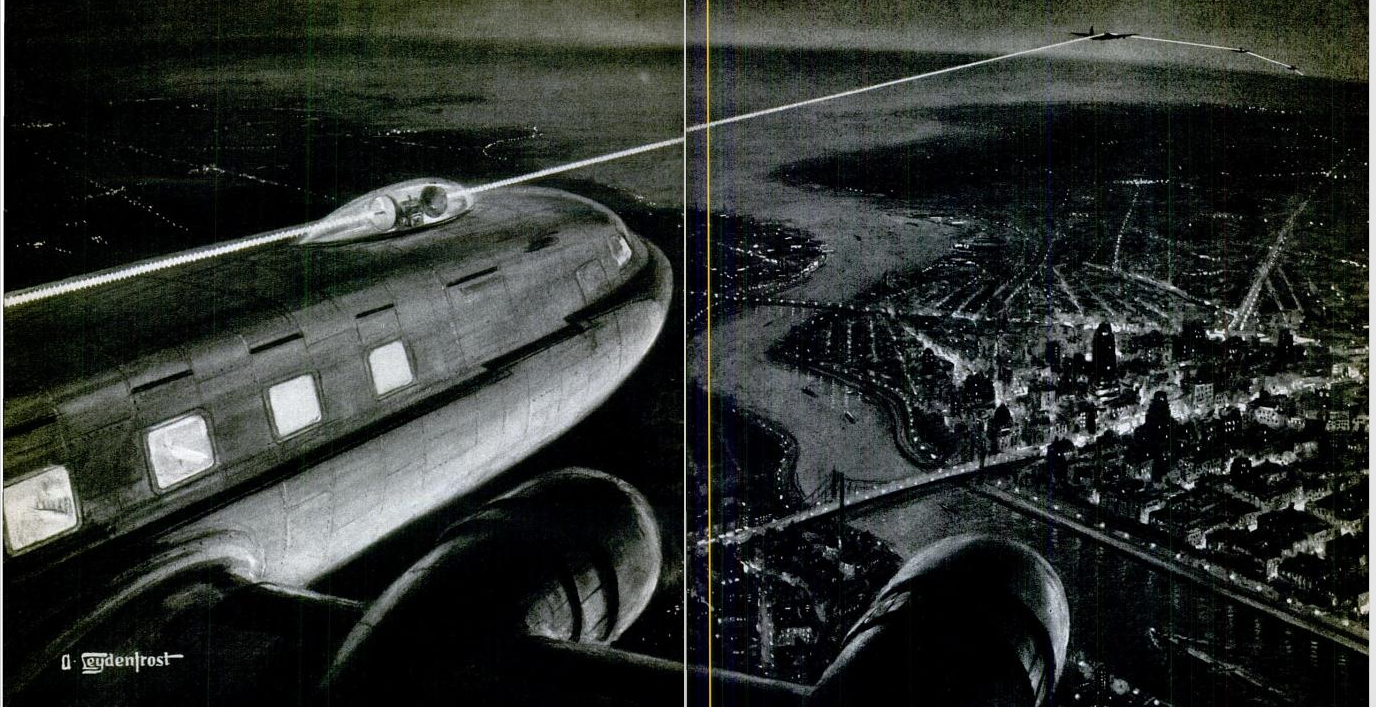
More in extended >>
Posted By: Paul - Thu Oct 22, 2020 -
Comments (3)
Category: Technology, Air Travel and Airlines, 1950s
The 1932 Helicron
Propellor-driven car.Read about it here.
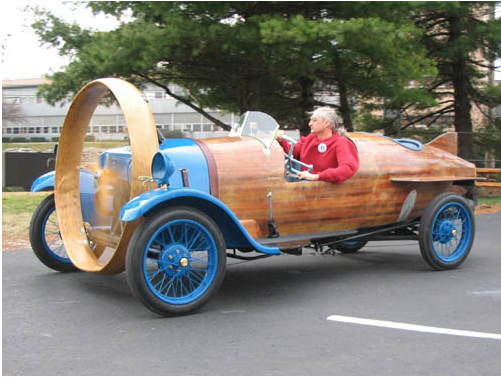
Posted By: Paul - Mon Oct 05, 2020 -
Comments (3)
Category: Inventions, Air Travel and Airlines, 1930s, Cars
Blaze, the Dog That Flew First Class
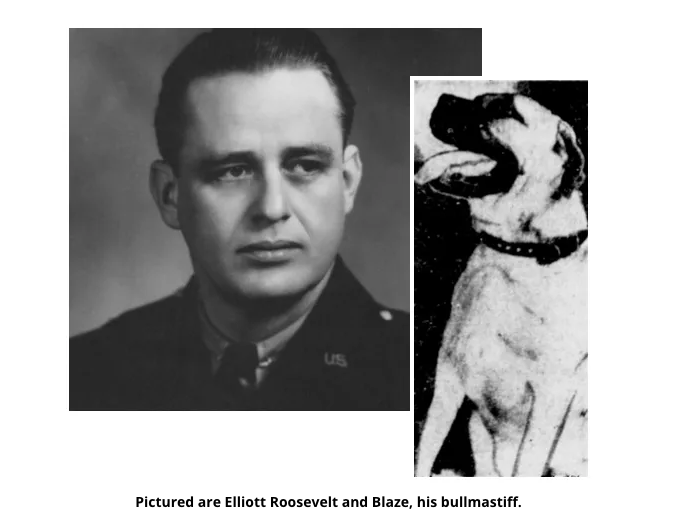
In the year 1945, a dog named Blaze, while being shipped on Army Transport planes, bumped off several traveling soldiers, causing a national controversy.
Read about it here.
A funnier account was composed by James Thurber, viewable after the jump.
More in extended >>
Posted By: Paul - Mon Mar 30, 2020 -
Comments (0)
Category: Government, Scandals and Controversies, War, Air Travel and Airlines, Dogs, 1940s
Airplane Hat
Created by Gilbert Myers of Boise, Idaho. He was evidently worried that someone might steal his idea because, in 1929, he patented it. From the patent:Use of a number of novelty hats constructed as herein disclosed has demonstrated that the hat enjoys the favor of adults as well as children and may be applied to heads of various sizes in a highly convenient and expeditious manner and will remain firmly in place, all without exerting an objectionable pressure on the head.
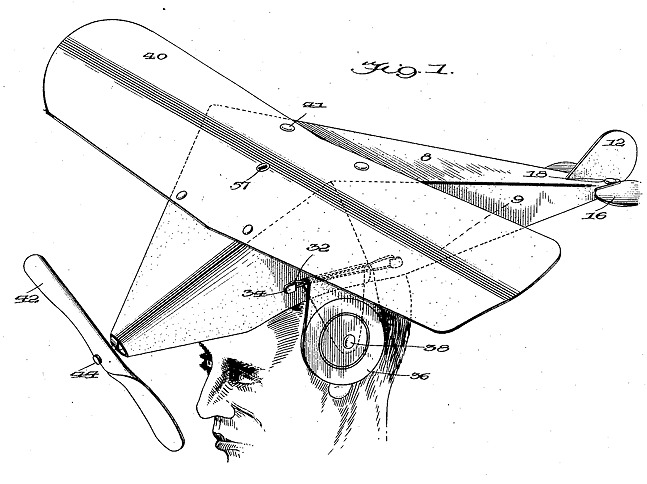
The picture below shows the airplane hat being worn. (The accompanying article identified it as Myers's hat).
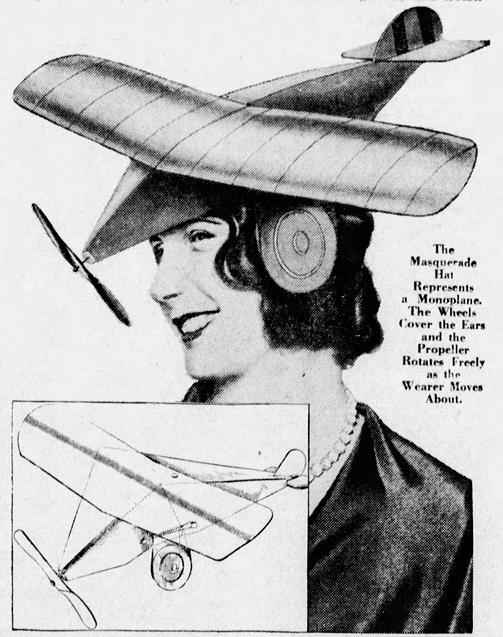
Minneapolis Star Tribune - Feb 2, 1930
These other photos, of actress Alice White, I'm not so sure about. It looks a lot like his hat. If it isn't, someone ignored his patent.
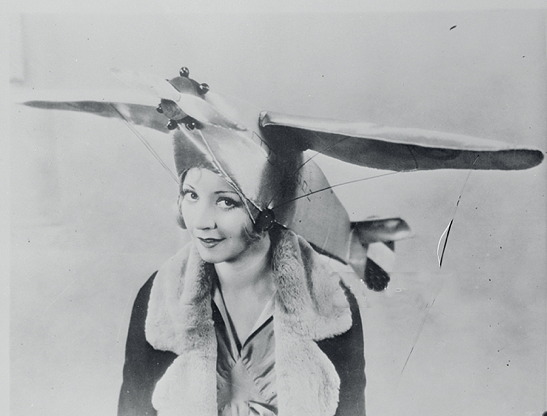
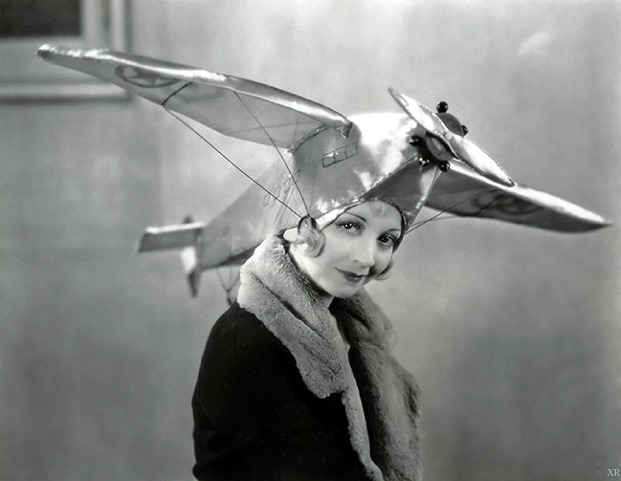
source: Flickr
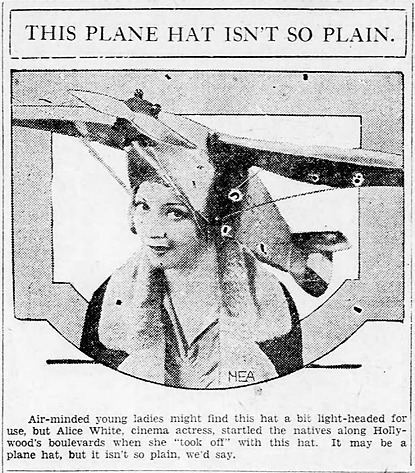
Battle Creek Enquirer - Jan 14, 1930
Posted By: Alex - Sun Feb 23, 2020 -
Comments (2)
Category: Patents, Air Travel and Airlines, Headgear, 1920s
Elm Farm Ollie Day
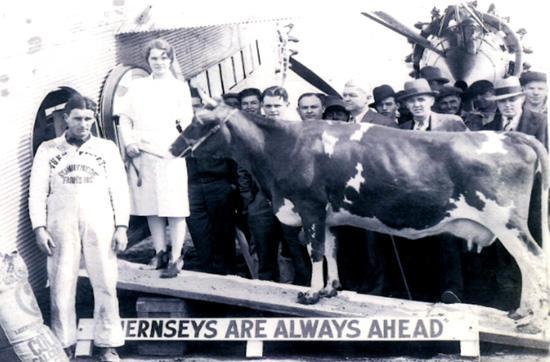
Feb. 18 is Elm Farm Ollie Day, commemorating the first flight in a plane by a cow. An article posted over at rootsweb.ancestry.com tells us that Elm Farm Ollie (aka Sunnymede Ollie, Nellie Jay, or Sky Queen) is remembered each year at the dairy festival in Mount Horeb, Wisconsin:
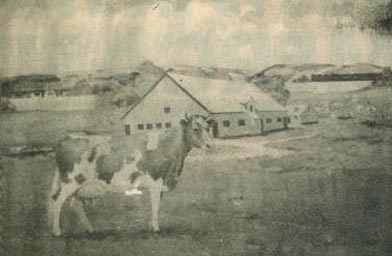
A 1930 news-wire story provided details about the historic flight:
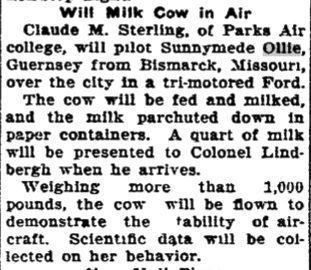
Claude M. Sterling, of Parks Air college, will pilot Sunnymede Ollie, Guernsey from Bismarck, Missouri, over the city in a tri-motored Ford.
The cow will be fed and milked and the milk parachuted down in paper containers. A quart of milk will be presented to Colonel Lindbergh when he arrives.
Weighing more than 1000 pounds, the cow will be flown to demonstrate the ability of aircraft. Scientific data will be collected on her behavior.
-The Evening Tribune (Albert Lea, Minn.) - Feb. 18, 1930.
More info at wikipedia and mustardmuseum.com.
Posted By: Alex - Tue Feb 18, 2020 -
Comments (7)
Category: Animals, Farming, Air Travel and Airlines, 1930s
Odd Ducks: Unusual Aircraft from the Movietone Collection, 1921-1934
Posted By: Paul - Tue Jan 21, 2020 -
Comments (2)
Category: Eccentrics, Inventions, Air Travel and Airlines, 1920s, 1930s
Joe Wardle’s Emergency Landing
This photo illustrates the more likely intersection of plane and car. But in 1952 a certain Joe Wardle got lucky.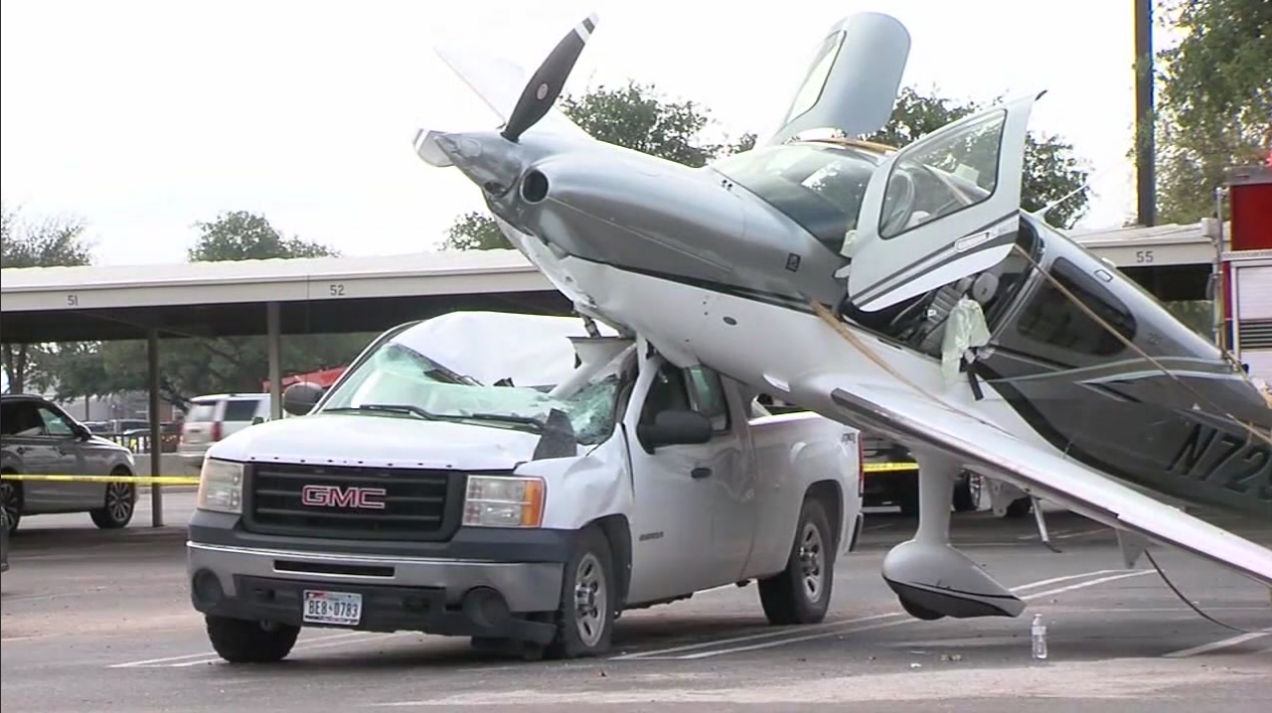
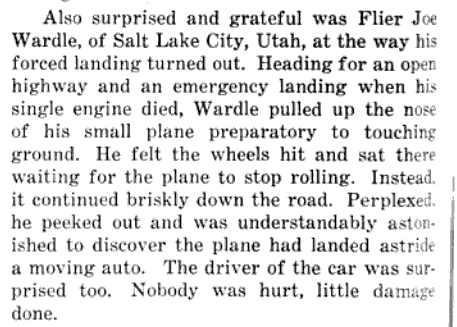
Source.
Posted By: Paul - Mon Dec 09, 2019 -
Comments (5)
Category: Accidents, Air Travel and Airlines, 1950s, Cars

| Who We Are |
|---|
| Alex Boese Alex is the creator and curator of the Museum of Hoaxes. He's also the author of various weird, non-fiction, science-themed books such as Elephants on Acid and Psychedelic Apes. Paul Di Filippo Paul has been paid to put weird ideas into fictional form for over thirty years, in his career as a noted science fiction writer. He has recently begun blogging on many curious topics with three fellow writers at The Inferior 4+1. Contact Us |




